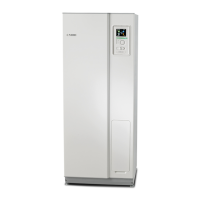FLOW PIPE
The line in which the heated water is transported from the electric boil-
er/indoor module out to the building’s climate system (radiators/heating
coils).
HEAT EXCHANGER
Device that transfers heat energy from one medium to another without
mixing mediums. Examples of different heat exchangers include evapor-
ators and condensers.
HEATING CURVE
The heating curve determines what heat the electric boiler/indoor module
is to supply depending on the temperature outdoors. If a high value is
selected, this tells the electric boiler/indoor module that it must supply
a lot of heat when it is cold outdoors in order to achieve an optimum in-
door temperature.
HEATING MEDIUM
Hot liquid, usually normal water, which is sent from the electric boiler/in-
door module to the building’s climate system and makes the accommod-
ation warm. The heating medium also heats the charge coil with the hot
water.
OUTSIDE SENSOR
A sensor that is located outdoors. This sensor tells the electric boiler/in-
door module how hot it is outdoors.
RADIATOR
Another word for heating element. They must be filled with water in order
to be used with VVM 225.
REFRIGERANT
Substance that circulates around a closed circuit in the heat pump and
that, through pressure changes, evaporates and condenses. During
evaporation, the refrigerant absorbs heating energy and when condensing
gives off heating energy.
RETURN PIPE
The line in which the water is transported back to the electric boiler/indoor
module from the building’s heating system (radiators/heating coils).
NIBE VVM 225Chapter 6 | Glossary86

